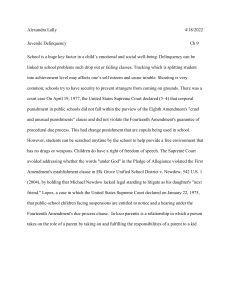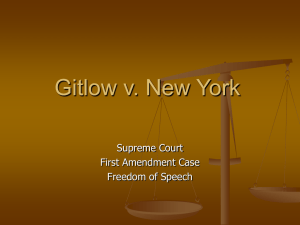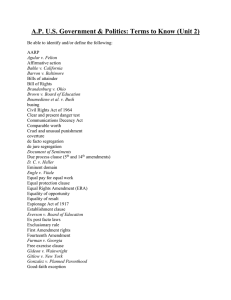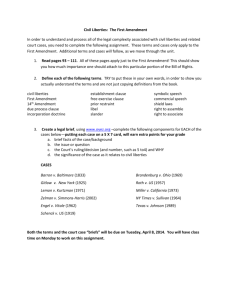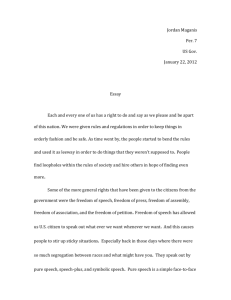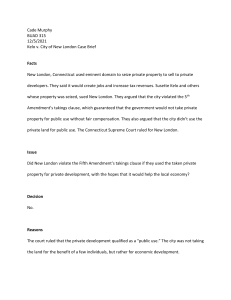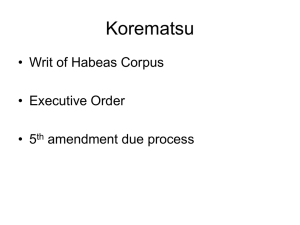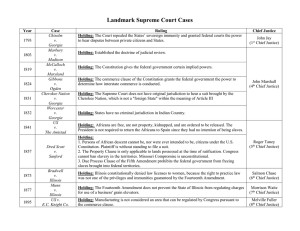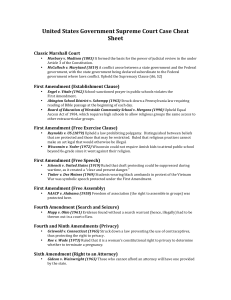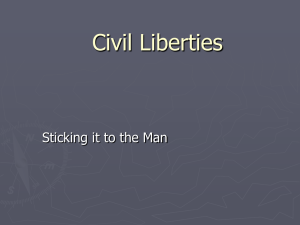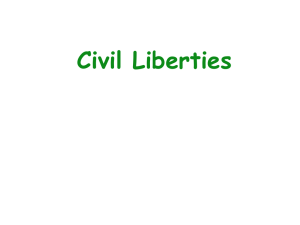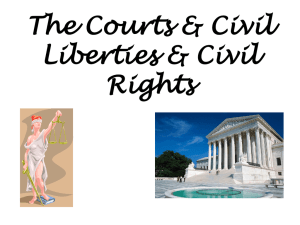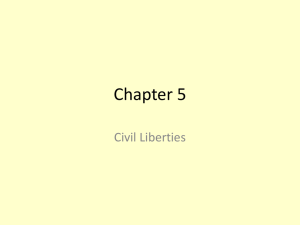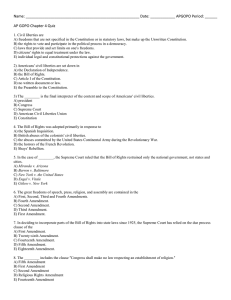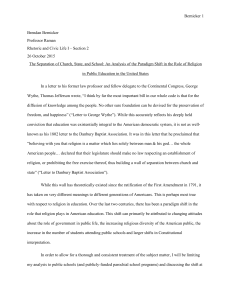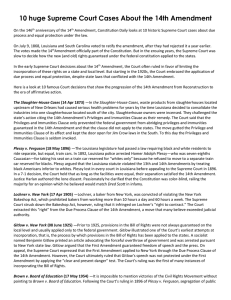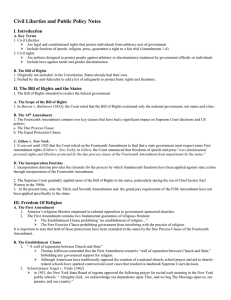Supreme Court Cases likely to appear on the AP Exam: Study Sheet
advertisement
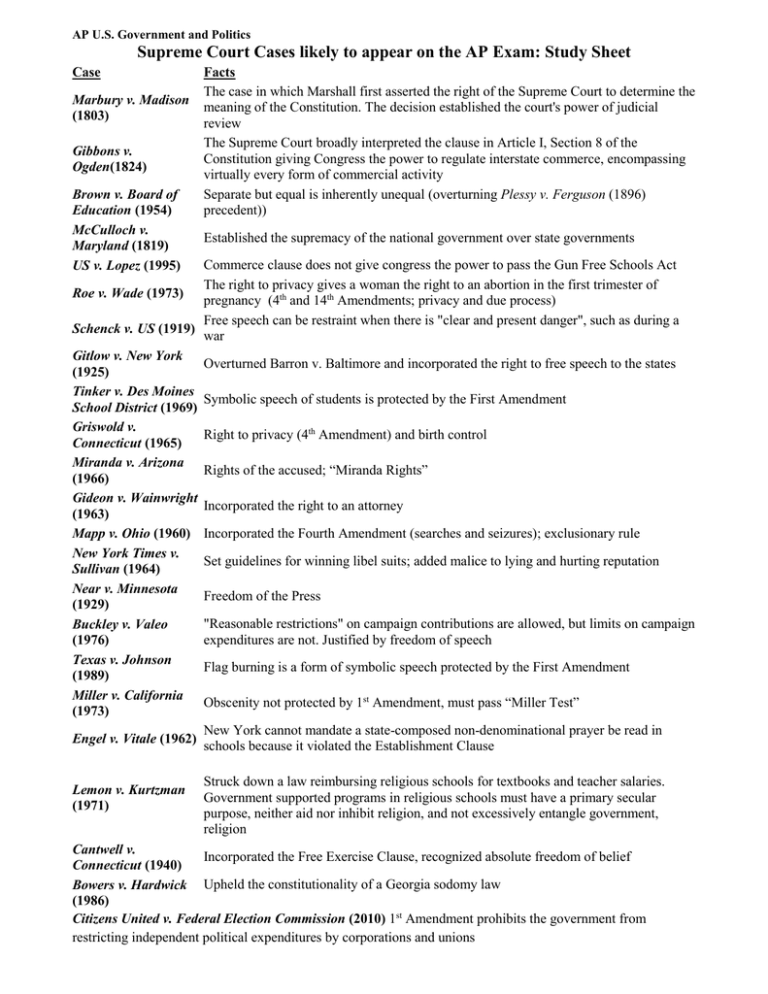
AP U.S. Government and Politics Supreme Court Cases likely to appear on the AP Exam: Study Sheet Case Marbury v. Madison (1803) Gibbons v. Ogden(1824) Brown v. Board of Education (1954) McCulloch v. Maryland (1819) US v. Lopez (1995) Facts The case in which Marshall first asserted the right of the Supreme Court to determine the meaning of the Constitution. The decision established the court's power of judicial review The Supreme Court broadly interpreted the clause in Article I, Section 8 of the Constitution giving Congress the power to regulate interstate commerce, encompassing virtually every form of commercial activity Separate but equal is inherently unequal (overturning Plessy v. Ferguson (1896) precedent)) Established the supremacy of the national government over state governments Commerce clause does not give congress the power to pass the Gun Free Schools Act The right to privacy gives a woman the right to an abortion in the first trimester of Roe v. Wade (1973) pregnancy (4th and 14th Amendments; privacy and due process) Free speech can be restraint when there is "clear and present danger", such as during a Schenck v. US (1919) war Gitlow v. New York Overturned Barron v. Baltimore and incorporated the right to free speech to the states (1925) Tinker v. Des Moines Symbolic speech of students is protected by the First Amendment School District (1969) Griswold v. Right to privacy (4th Amendment) and birth control Connecticut (1965) Miranda v. Arizona Rights of the accused; “Miranda Rights” (1966) Gideon v. Wainwright Incorporated the right to an attorney (1963) Mapp v. Ohio (1960) Incorporated the Fourth Amendment (searches and seizures); exclusionary rule New York Times v. Set guidelines for winning libel suits; added malice to lying and hurting reputation Sullivan (1964) Near v. Minnesota Freedom of the Press (1929) "Reasonable restrictions" on campaign contributions are allowed, but limits on campaign Buckley v. Valeo expenditures are not. Justified by freedom of speech (1976) Texas v. Johnson Flag burning is a form of symbolic speech protected by the First Amendment (1989) Miller v. California Obscenity not protected by 1st Amendment, must pass “Miller Test” (1973) New York cannot mandate a state-composed non-denominational prayer be read in Engel v. Vitale (1962) schools because it violated the Establishment Clause Lemon v. Kurtzman (1971) Struck down a law reimbursing religious schools for textbooks and teacher salaries. Government supported programs in religious schools must have a primary secular purpose, neither aid nor inhibit religion, and not excessively entangle government, religion Cantwell v. Incorporated the Free Exercise Clause, recognized absolute freedom of belief Connecticut (1940) Bowers v. Hardwick Upheld the constitutionality of a Georgia sodomy law (1986) Citizens United v. Federal Election Commission (2010) 1st Amendment prohibits the government from restricting independent political expenditures by corporations and unions
